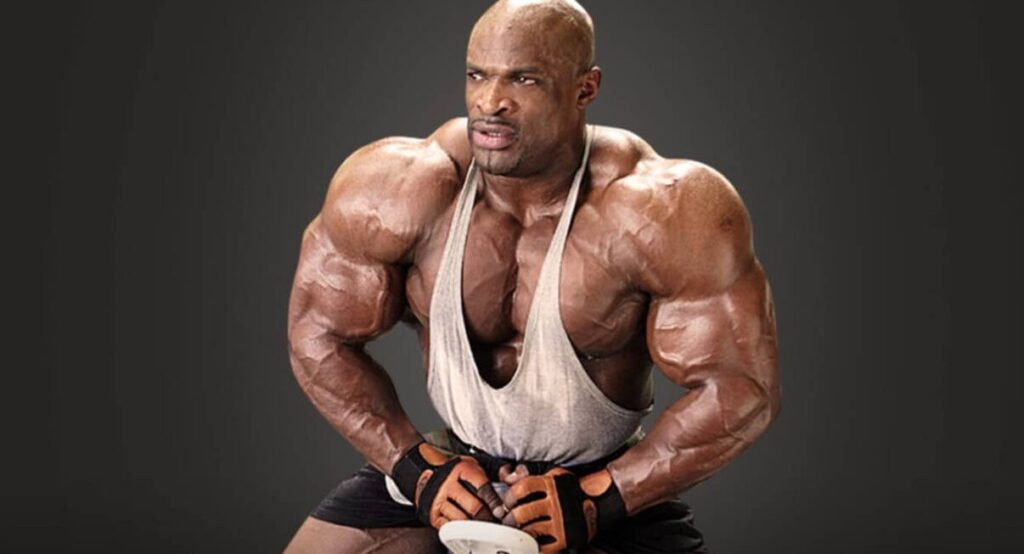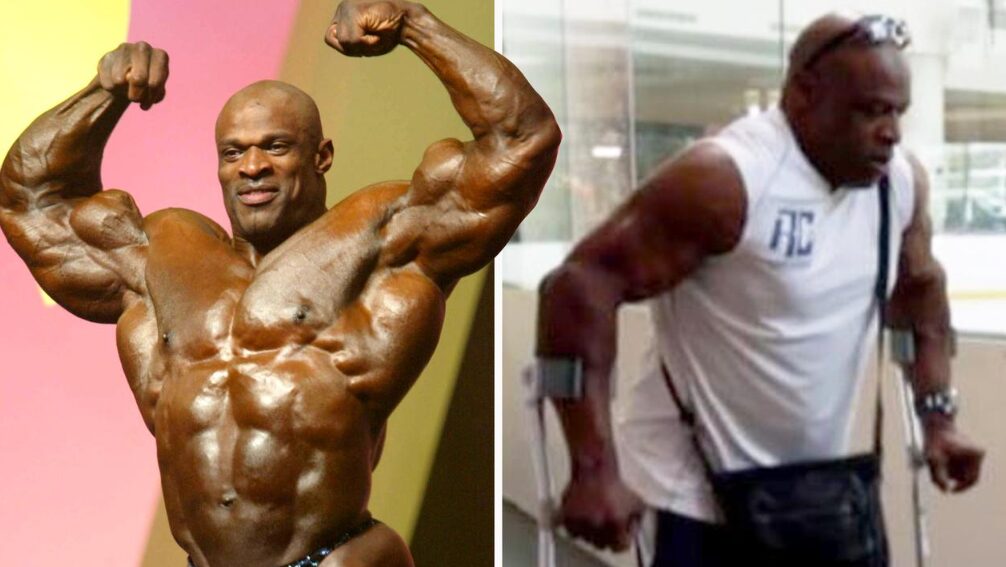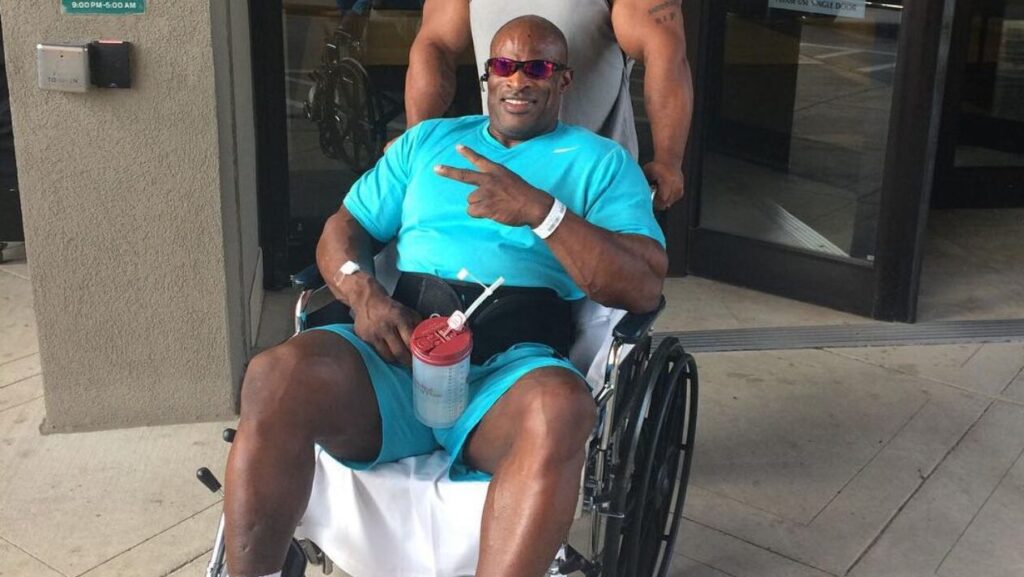Ronnie Coleman tried to make a comeback even though he had had several surgeries and was in constant pain. It showed how determined he was, but it also showed how hard extreme training can be on the body. His story is both an inspiration and a warning about going too far. He now talks about how important it is to balance ambition with being aware of your body and getting enough rest.
He says that success is more than just trophies. His eight Mr. Olympia titles are not his most important legacy; what he learned from his physical struggles is.
The Eight-Time Champion’s Rise to Bodybuilding Dominance
Before he became the best bodybuilder in the world, Ronnie Coleman showed the raw determination that would later define his legendary career. In those early years, he trained so hard that he often lifted weights that left other competitors speechless. He started to build his legacy when he worked out every day at 5 AM, even though he was a police officer and worked the night shift.
Coleman was strong because he went from being an underdog to Mr. Olympia, winning eight titles in a row from 1998 to 2005. It wasn’t just his genes that made him different; he also had an unbreakable desire to work out harder than anyone else in the room. “Yeah, buddy!” and “Lightweight baby!” were more than just catchphrases; they showed how determined he was to change bodybuilding standards for good.

Physical Decline and the Reality of Multiple Surgeries
Coleman’s rise to the top came at a terrible cost to his body, which he only realized after he retired. Years of hard training led to multiple back surgeries, hip replacements, and chronic pain that made it hard for him to move around normally.
Coleman stayed strong during his physical therapy, even though the doctors told him to be careful. He learned how to deal with injuries by changing up his workouts but never giving up.
But these surgeries, which now number more than a dozen, are strong reminders of how bodybuilders need to find a balance between wanting to win and being aware of their health.
The man who could squat 800 pounds now thinks that getting out of bed is a new way to be strong.

The Decision to Attempt a Comeback Against Medical Advice
Despite having numerous surgeries and being advised not to by his doctors, Ronnie Coleman made the contentious decision to resume training. Ultimately, this decision would demonstrate the human body’s weakness as well as his renowned resolve.
Without knowing how competitive Coleman is, it is impossible to comprehend his attempt to return. Most athletes’ careers would have ended as a result of his numerous spinal surgeries, but he refused to accept that. He felt that he could overcome physical challenges simply by wanting to, thanks to his discipline, which earned him eight Mr. Olympia titles.
Throughout his surgery and recuperation, Coleman frequently remarked, “I’ve never been one to listen when someone tells me I can’t do something.” It demonstrates the mindset that drove him to return to the gym despite the possibility of injury.

The Physical and Mental Battle of Training Through Pain
When Coleman started to feel intense pain every day during his training, he didn’t see it as a sign to stop. Instead, he saw it as just another challenge to overcome with discipline and determination. Even though doctors told him his body needed rest, not more stress, the eight-time Mr. Olympia champion kept up his legendary workout intensity.
Coleman made his recovery harder during his bodybuilding comeback by refusing to cut back. You’d see him trying to do 500-pound squats with titanium rods in his spine. It showed both how strong his mind was and how little he cared about his body’s limits. His strength training program inspired millions of people, but it cost him a lot in his personal life.
Coleman’s journey is both an inspiration for fitness and a warning about the thin line between pushing yourself too hard and hurting yourself permanently.
Legacy Beyond Competition
Ronnie Coleman’s comeback journey left him with a lot of wisdom that he gained through pain, not the weights he lifted. His story teaches you that to build muscle that lasts, you need to balance your desire to get stronger with your desire to live longer. He learned this lesson the hard way.
Coleman’s real legacy is how he changed the definition of success from trophies to something else. He turned his struggle into inspiration when his physical limitations kept him from reaching his former glory. He now freely talks about how unchecked determination can have long-lasting effects.
His message speaks to athletes of all levels. Pay attention to your body, make recovery a priority, and know when your dedication is turning into self-destruction. Sometimes, real strength is knowing when to back off.
Frequently Asked Questions
Which Specific Exercises Did Coleman Eliminate From His Post-Surgery Routines?
Coleman eliminated heavy squats, deadlifts, and free-weight barbell bench presses from his post-surgery routines. You’ll notice he switched to machine alternatives and lighter isolation exercises to accommodate his spinal and hip limitations.
Did Coleman Regret His Comeback Attempt in Retrospect?
Coleman expressed mixed feelings about his comeback. You’ll find he doesn’t fully regret it despite the physical toll, as his passion for training outweighed the consequences, though he wishes he’d been more cautious.
How Did Coleman’s Family React to His Comeback Decision?
Coleman’s family showed mixed reactions and concern for his health, balanced with respect for his passion. They supported his decision while encouraging him to contemplate the long-term consequences of pushing his already-injured body too far.



